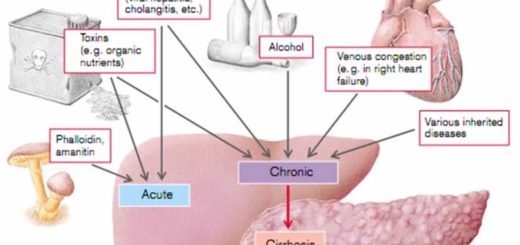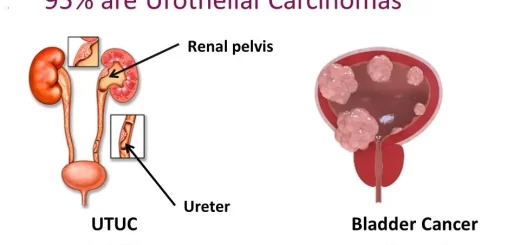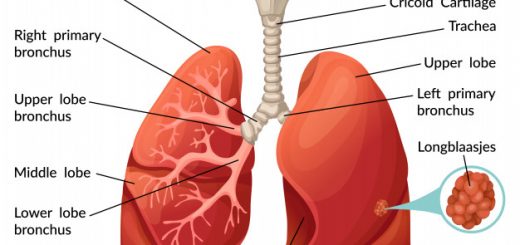Ankle joint structure, ligaments and function, Arches of the foot, High Arches and Flat Foot
The ankle is known as the talocrural region, It includes three joints: the ankle joint proper or talocrural joint, the subtalar joint, and the inferior tibiofibular joint, It is formed by three bones; the tibia and fibula of the leg, and the talus of the foot. The movements produced at this joint are dorsiflexion and plantar flexion of the foot.
Ankle joint
The ankle joint is a synovial joint located in the lower limb, It is formed by the bones of the leg (tibia and fibula) and the foot (talus). It is the region where the foot and the leg meet, it is a hinge-type joint, It permits dorsiflexion and plantar flexion of the foot, as well as some degree of pronation and supination with subtalar and midtarsal joints.
Type: Synovial, hinge
Articular surfaces:
- Above: The lower end of tibia including the medial malleolus, and medial surface of the lateral malleolus. The lower ends of both the tibia and fibula are strongly interconnected by the interosseous tibiofibular ligament.
- Below: Superior, medial and lateral surfaces of the body of talus; the superior surface is called trochlear surface.
Capsule and synovial membrane:
- Capsule: Thin anteriorly and posteriorly; thick on sides to form ligaments.
- Synovial membrane: Lines the capsule, sends upward projection between the lower ends of the tibia and fibula.
Ligaments of ankle joint
- Anterior lig.
- Posterior lig.
- Deltoid lig, (Medial collateral): attached above to the medial malleolus; divided into 4 parts: Anterior tibiotalar, Posterior tibiotalar, Tibiocalcaneal, and Tibionavicular.
- Lateral collateral lig: attached above to the lateral malleolus; divided into 3 parts.
- Anterior talo-fibular lig. (lateral malleolus to neck of talus).
- Posterior talo-fibular lig. (lateral malleolus to post. tubercle of the talus).
- Calcaneo-fibular lig. (lateral malleolus to side of calcaneum).
Movements of ankle joint
- Dorsi-flexion: By tibialis anterior, extensor hallucis longus, extensor digitorum longus, and peroneus tertius.
- Planter-flexion: By gastrocnemis and soleus, tibialis posterior, flexor digitorum longus, flexor hallucis longus, plantaris, peroneus longus, and peroneus brevis.
Large joints of the foot
Type:
- Subtalar: Synovial, plane.
- Talo-calcaneonavicular: Synovial, ball and Socket.
- Calcaneo-cuboid: Synovial, plane.
Articular surfaces:
- Subtalar: Inferior surface talus and superior surface of calcaneus.
- Talo-calcaneonavicular: Head of talus (ball), calcaneus, and navicular (socket).
- Calcaneo-cuboid: Ant. end of the calcaneus and posterior surface of cuboid.
Ligaments:
- Subtalar: Talocalcaneal ligaments.
- Talo-calcaneonavicular: Spring (planter calcaneo-navicular) ligament. Deltoid ligament. Medial limb of bifurcate ligament.
- Calcaneo-cuboid: The bifurcate ligament. Short plantar ligament. Long plantar ligament.
Movements:
- Subtalar: Gliding.
- Talo-calcaneonavicular: Gliding, inversion and eversion.
- Calcaneo-cuboid: Inversion and Eversion.
The small joints of the foot
- Cuneonavicular: type is Plane, Movement: Little.
- Tarsometatarsal: type is Synovial, Plane, Movement: Gliding or sliding.
- Intermetatarsal: type is Synovial, Plane, Movement: Little.
- Metatarso-phalangeal: type is Synovial, Condylar, Movement: Flexion, extension, some abduction, adduction, and circumduction.
- Interphalangeal: type is Synovial, hinge, Movement: Flexion, extension.
Arches of the foot
The foot has three arches: two longitudinal (medial and lateral) arches and one anterior transverse arch, They are formed by the tarsal and metatarsal bones and supported by ligaments and tendons in the foot. Their shape allows them to act in the same way as a spring, bearing the weight of the body and absorbing the shock produced during locomotion. The flexibility conferred to the foot by these arches facilitates functions such as walking and running.
Longitudinal arches: There are two longitudinal arches in the foot – the medial and lateral arches. They are formed between the tarsal bones and the proximal end of the metatarsals.
Medial arch: The medial arch is the higher of the two longitudinal arches. It is formed by the calcaneus, talus, navicular, three cuneiforms, and first three metatarsals bones. It is supported by:
- Muscular support: Tibialis anterior and posterior, peroneus longus, flexor digitorum longus, flexor hallucis, and the intrinsic foot muscles.
- Ligamentous support: Plantar ligaments (in particular the long plantar, short plantar and plantar calcaneonavicular ligaments), medial ligament of the ankle joint, & plantar aponeurosis.
- Bony support: Shape of the bones of the arch.
Lateral arch: The lateral arch is the flatter of the two longitudinal arches, and lies on the ground in the standing position. It is formed by the calcaneus, cuboid, and 4th sth and 5th metatarsals bones. It is supported by:
- Muscular supprt: peroneus longus, flexor digitorum longus, and the intrinsic foot muscles.
- Ligamentous support: Plantar ligaments (in particular the long plantar and short plantar and plantar ligaments) and plantar aponeurosis
- Body support: Shape of the bones of the arch.
Transverse Arch: The transverse arch is located in the coronal plane of the foot. It is formed by the metatarsal bases, the cuboid, and the three cuneiform bones. It has:
- Muscular support: peroneus longus is the most important
- Ligamentous support: ligaments that bind together the cuneiforms and the bases of the metatarsal bones (deep transverse metatarsal ligaments).
- Bony support: The wedged shape of the bones of the arch.
Applied anatomy: Pes Cavus (High Arches)
Pes Cavus is a foot condition characterized by an unusually high medial longitudinal arch. Due to the higher arch, the ability to shock absorb during walking is diminished and an increased degree of stress is placed on the ball and heel of the foot. Consequently, symptoms will generally include pain in the foot, which can radiate to the ankle, leg, thigh, and hip.
Pes Planus (Flat Foot)
Pes Planus (Flat Foot) is a common condition in which the longitudinal arches have been lost. Arches do not develop until about 2-3 years of age, meaning flat feet during infancy is normal. For most individuals, being flat-footed causes few, if any, symptoms. In children, it may result in foot and ankle pain, whilst in adults, the feet may ache after prolonged activity.
Joints of lower limb, Hip joint, Knee joint, Tibio-fibular joints structure & movements
Arteries of leg and foot, Veins & Lymphatics of the lower limb
Deep fascia of the foot, Extensor expansion of toes, Dorsum & Sole of the foot
Structure of skeleton of the foot, Tarsals, Metatarsals and Phalanges
Gluteal region structure, muscles, nerves & Posterior compartment of thigh muscles



